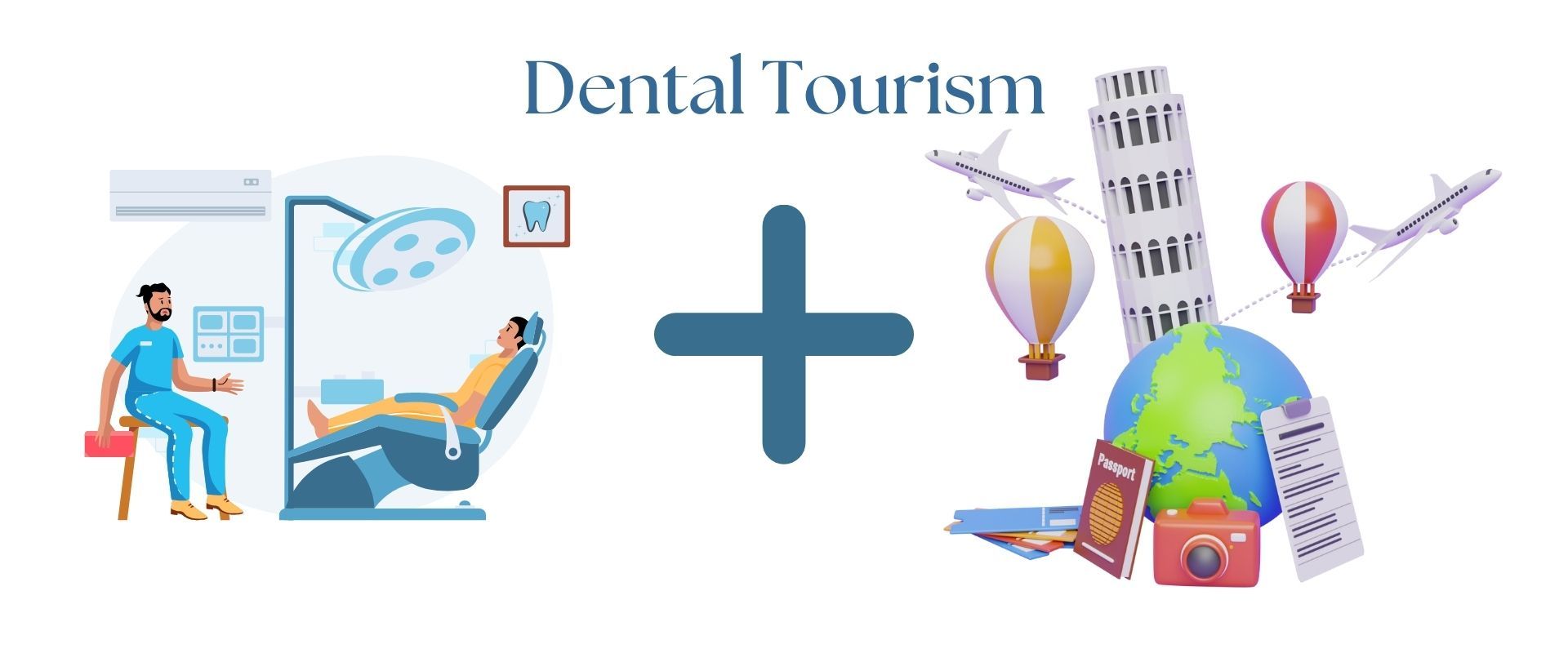
Introduction
Whether you’re covered by NHS services or exploring other options, dental coverage plans are an essential aspect of our health.
In this guide we will go over dental coverage plans, highlighting essential procedures, inclusions, and discounts. We will also introduce you to dental tourism, an emerging trend combining quality dental care with travel to cost-effective destinations.
Understanding Dental Coverage Plans: An Overview
Dental coverage plans are designed to reduce your dental care costs. They encompass a variety of services, ranging from routine preventative care, such as cleanings and check-ups, to more complex procedures like root canals or dental implants.
It’s essential to comprehend that coverage can significantly vary based on the plan type and the provider. Some plans may offer comprehensive coverage, including orthodontic or cosmetic procedures, while others focus solely on preventive and basic dental care.
Understanding the details of your dental coverage plan is essential to ensure you receive the care you need without any surprise costs. Be sure to familiarise yourself with the inclusions, exclusions, and any discounts offered.
Most plans typically work within a network of dental providers, meaning you may need to select a dentist who participates in the plan’s network for the maximum benefits.
Dental tourism has emerged as a popular alternative for many as healthcare costs continue to rise. It involves traveling abroad to countries where dental procedures are offered at a lower cost without compromising quality. However, it’s crucial to research thoroughly and consider all factors before embarking on a dental tourism journey.
Remember, a well-informed decision is the first step toward optimal oral health.
Types of Dental Coverage Plans: Choose What Works for You
Dental coverage plans generally fall into three categories: Dental Health Maintenance Organizations (DHMOs), Preferred Provider Organizations (PPOs), and Indemnity plans.
1. Dental Health Maintenance Organizations (DHMOs)
DHMOs are insurance plans requiring you to select a primary care dentist from a network of providers. These dentists are paid a fixed amount regardless of their services, so preventive care such as cleanings and check-ups are usually fully covered. DHMOs typically have lower premiums and no deductibles but offer limited flexibility in choosing your dentist.
2. Preferred Provider Organizations (PPOs)
PPOs offer more flexibility than DHMOs. While you can choose any dentist, you’ll save more if you opt for one within the PPO network. These plans usually involve higher premiums and deductible amounts but often provide broader coverage.
3. Indemnity Plans
Indemnity or fee-for-service plans offer the greatest degree of freedom. With these, you can seek services from any dentist you choose. The plan pays a predetermined percentage of your dental costs, and you’re responsible for the rest. Indemnity plans generally have higher premiums, co-payments, and deductibles but offer extensive coverage and flexibility.
While selecting a plan, you must consider your dental needs, budget, and the flexibility you desire in choosing a dentist. Comparing the benefits and drawbacks of each plan can assist you in making an informed decision.
Remember, one size doesn’t fit all. What works for one person may not necessarily work for you. Choose wisely to ensure your smile remains healthy and bright.
Inclusions in Dental Coverage Plans: What’s Covered?

Dental coverage plans typically include various services, although the specifics may vary from plan to plan. Here’s a summary of what’s commonly covered:
1. Preventive Care
Most dental coverage plans cover preventive care, which includes regular check-ups, cleanings, and X-rays. Some policies also cover services like fluoride treatments and sealants for children. These services are crucial for identifying and addressing dental issues before they become severe and costly.
2. Basic Procedures
Most dental plans typically cover basic procedures such as fillings, extractions, and root canals at a moderate level. You may be required to cover some of the costs, known as co-insurance.
3. Major Procedures
Major procedures like crowns, bridges, dentures, and implants are often covered, but usually at a lower rate than basic procedures. You would be expected to cover a higher percentage of the costs.
4. Orthodontics
Depending on your plan, orthodontic treatments such as braces or Invisalign may be covered. However, these services often have an age limit and a maximum coverage limit.
5. Cosmetic Procedures
Most dental coverage plans do not include cosmetic procedures like teeth whitening or veneers, as these are considered non-essential.
Remember, while dental coverage plans can significantly help manage dental care costs, they don’t always cover 100% of the expenses. Therefore, it’s essential to understand the details of what your plan covers and to plan accordingly.
Discounts and Extra Benefits in Dental Coverage Plans
In addition to covering a range of dental procedures, many dental coverage plans offer various discounts and extra benefits. These additional features aim to make dental care more accessible and affordable for policyholders.
1. Discounts on Non-Covered Procedures
Some plans offer discounts on procedures that aren’t typically covered, such as cosmetic dentistry. These discounts can make procedures like teeth whitening or veneers more financially manageable.
2. No Waiting Period
Specific dental coverage plans have no waiting period, meaning you can enjoy your plan’s benefits from the moment it becomes active. This can be particularly beneficial if immediate dental work is required.
3. Out-of-Network Benefits
While most plans encourage you to use dentists within their network, some offer benefits even if you choose an out-of-network dentist. Although the coverage may be less, it provides greater flexibility in choosing a dentist.
4. Dental Tourism
To cater to the increasing popularity of dental tourism, some dental coverage plans now include benefits for dental procedures performed overseas. This can significantly reduce the cost of expensive treatments, even when travel costs are factored in.
5. Family and Group Discounts
Many plans offer discounts for family or group coverage, making it less expensive to insure multiple people.
It’s important to note that the discounts and extra benefits vary significantly between dental coverage plans. Therefore, it’s crucial to thoroughly read and understand your policy’s terms and conditions before enrollment. Remember, the goal is to achieve the highest possible dental care at the most affordable price.
Dental Tourism: The New Dental Coverage Plans Addition

Dental tourism is a rapidly growing sector within the healthcare industry, directly linked to the increasing costs of dental care in certain countries. It involves individuals traveling abroad to benefit from more affordable dental treatments while enjoying a vacation.
Recently, this phenomenon has been noticed by dental coverage plan providers, leading to the inclusion of dental tourism within the services they offer.
This pioneering development within dental coverage plans is a silver lining for those seeking extensive dental procedures. It provides an opportunity to receive high-quality dental care from renowned international dental centers at a fraction of the cost.
These savings can be so significant that even after considering travel and accommodation expenses, the overall cost of dental treatment abroad can be less than the cost of the procedure alone in one’s home country.
Dental tourism is wider than specific procedures. Whether it’s routine dental check-ups, complex treatments like dental implants, or cosmetic procedures like whitening and veneers, dental tourism covers many services, further increasing its attractiveness to individuals seeking comprehensive dental care solutions.
However, it’s crucial to approach dental tourism with informed decision-making. Prospective dental tourists should thoroughly research the qualifications and experience of overseas dental professionals and the quality of the dental clinics.
It’s essential to understand the coverage details of your dental plan regarding dental tourism and to communicate effectively with your insurance provider to avoid any unexpected costs.
With careful planning, dental tourism can be a beneficial component of your overall healthcare strategy.
Conclusion
Dental tourism has emerged as a viable and cost-effective alternative to conventional dental care, particularly for those seeking extensive treatments. It offers substantial cost savings, even when factoring in travel and accommodation expenses, and encompasses a wide range of services, from routine check-ups to complex procedures.
However, it is paramount for prospective dental tourists to conduct thorough research into the qualifications and experiences of overseas dental professionals and facilities. Also, a clear understanding of the specifics of your dental coverage plan regarding dental tourism is essential. Communication with your insurance provider can help avoid unforeseen costs.
Dental tourism can add value to your broader healthcare strategy with careful planning and informed decisions.
Rruga Bardhok Biba, Pall. Golden Trema, Shk. B, Kati 4, Tiranë
+355 (0) 69 659 8059
Copyright 2024 – Andent Dental Clinic